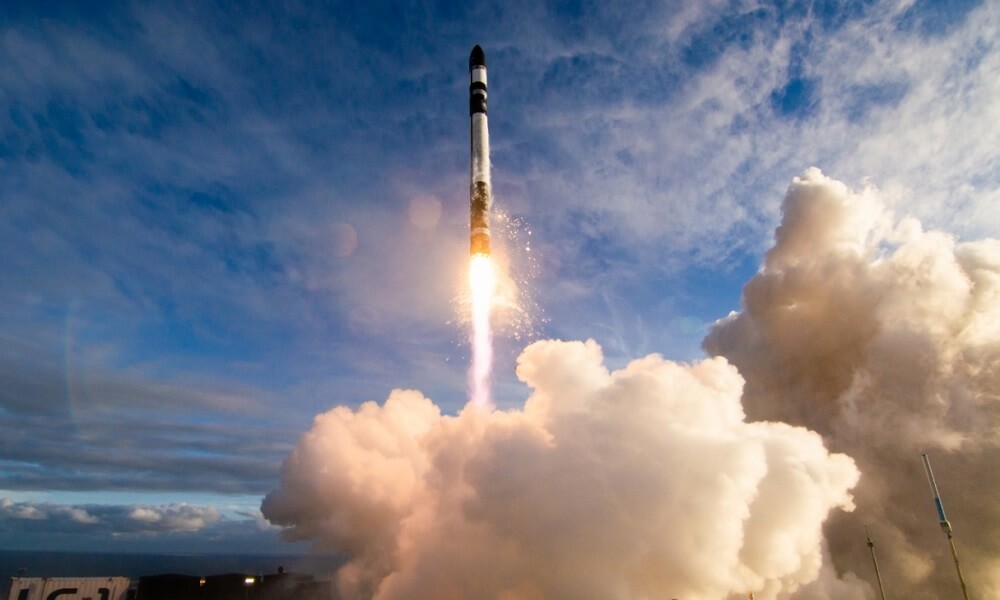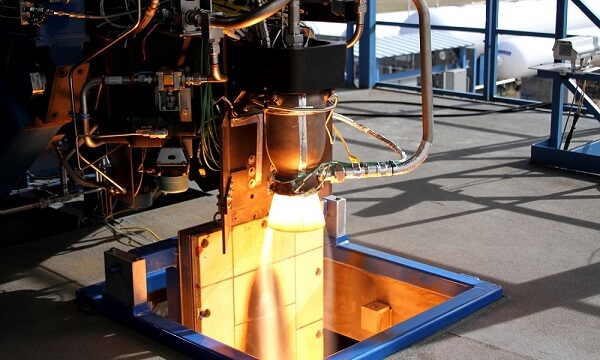3D printed rocket: Rocket Lab launches first NASA mission
Posted By Lucie Gaget on Jan 9, 2019 | 0 comments
Did you know that you can 3d print Rocket engines? Not only that, but today, we will tell you about a new example of 3D printed rocket. The company Rocket Lab developed a 3D printed rocket and it has launched its first mission for NASA. A great way to end 2018!
In this blog post, we will tell you everything you need to know about this new incredible mission and see how, once again, aerospace and 3D printing are leading to successful and promising results.
Rocket Lab launches first NASA mission with 3D printed rocket
What has been made?
Rocket Lab is a startup developing smaller satellite airbornes. On December 16th, in New Zealand, Rocket Lab launched ELaNa-19 (Educational Launch of Nanosatellites). The launch vehicle was carrying 13 nanosatellites called CubeSat. These satellites are dedicated to research purposes.
This 3D printed Electron rocket took the CubeSats to the sky in less than one hour, then all of these nanosatellites were deployed to their assigned orbits. The Electron rocket is 17 meters high and can carry a load of 225 kg maximum. This launch has been a real success, new launches are already planned for 2019!
How does it work?
The rocket uses two different kinds of engines. One of them is the Rocket Lab’s Rutherford liquid-propellant engine, and it is also the first oxygen/kerosene engine to use 3D printing for all of its essential and primary components. It also happens to be the first battery-powered rocket engine. The engine is reducing the need for heavy pressurized fuel tanks, thanks to this and the 3D printed mechanism of the engine, the final electron rocket only weighs 35 kg. A reduction of the weight naturally lead to a reduction of the cost. This engine is used as both a primary stage and secondary stage engine.
The second engine is the Curie, powering the “kick stage” of the vehicle. What we call the kick stage is what reorients the rocket once it has reached the highest point in its elliptical orbit, allowing it to send satellites into their orbit.
Why choosing 3D printing to create rockets.
Benefits of 3D printing a rocket
All the essential components of the rocket have been 3D printed using the EBM technology (or Electron-Beam Melting process). How does it work? EBM uses an electron beam as the power source instead of a laser to 3D print metal. An electron beam melts metal powder layer by layer in a high vacuum and can achieve full melting of the metal powder. This method can produce fully dense metal parts and can retain the characteristics of the material. This method actually allowed the company to manufacture inexpensive engine parts.
Rocket Lab actually chose 3D printing for good reasons: this manufacturing technique allowed them to create a rocket, by making a lighter vehicle at a lower cost! Reducing weight and cost are two good reasons to use additive manufacturing. Two advantages that can be applied to any kind of businesses… Maybe yours?
As you may wonder, launching a satellite is an expensive project! Additive manufacturing has been used for this project in order to create a lighter vehicle to carry the nanosatellites. The 3D printing process also allows the company to produce faster. And speeds up the process which reduces the costs!
Other experiments have been done!
Indeed, other experiments have been led by researchers and scientists. But, why are they choosing 3D printing to manufacture these rockets? What are the advantages of this additive manufacturing technology?
NASA already prototyping using additive manufacturing
This technology has already been used by NASA to prototype a rocket engine. They actually created a rocket engine prototype using two different metals: copper alloy and Inconel. They used a process called brazing in order to join 2 different types of metal to create a brand new component. This advanced process is offering promising possibilities for the future of 3D printed metal parts.
SpaceX making the most of metal 3D printing
SpaceX also worked on 3D printed rocket engines. First, for testing, 3D printing has been used instead of the traditional casting method. 3D printing has also been an advantage for the manufacturing process, and it really reduced the lead-time. The 3D printed parts were even more resistant than traditional ones.
It is the proof that the benefits of 3D printing can be applied in a lot of different industries. Aerospace is really starting to make the most of this cutting edge technology.
You can also subscribe to our newsletter to get all the recent updates about 3D printing.
Are you looking for a cheaper manufacturing process? Do you want to reduce weight, costs or both, for your future project? Try out our online 3D printing service. Upload your 3D file, get an instant quote and receive your parts in a few days!
Credit photo: NASASpaceFlight.com


 Connect with Google
Connect with Google Connect with Facebook
Connect with Facebook
